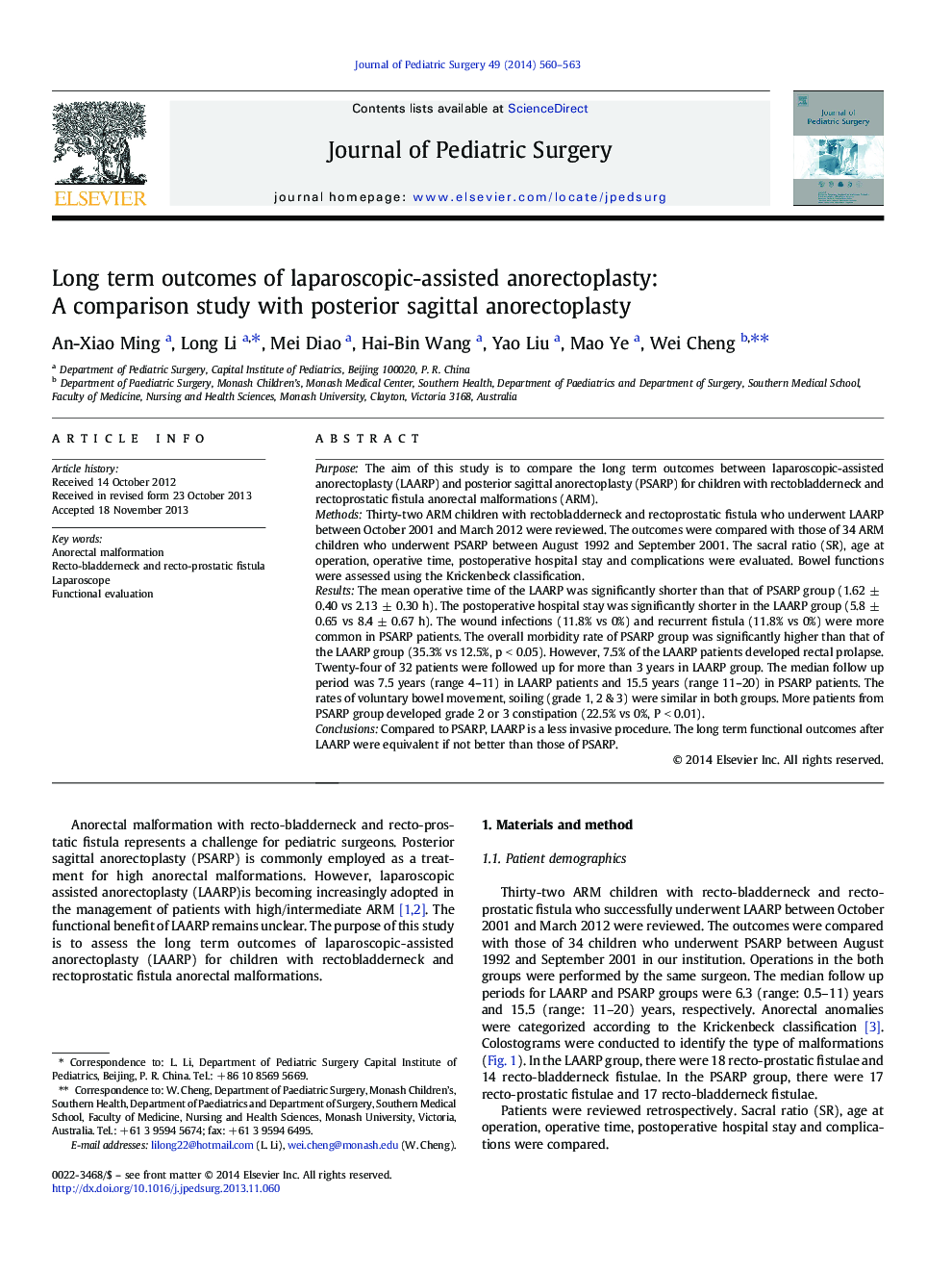| کد مقاله | کد نشریه | سال انتشار | مقاله انگلیسی | نسخه تمام متن |
|---|---|---|---|---|
| 4155311 | 1273743 | 2014 | 4 صفحه PDF | دانلود رایگان |
PurposeThe aim of this study is to compare the long term outcomes between laparoscopic-assisted anorectoplasty (LAARP) and posterior sagittal anorectoplasty (PSARP) for children with rectobladderneck and rectoprostatic fistula anorectal malformations (ARM).MethodsThirty-two ARM children with rectobladderneck and rectoprostatic fistula who underwent LAARP between October 2001 and March 2012 were reviewed. The outcomes were compared with those of 34 ARM children who underwent PSARP between August 1992 and September 2001. The sacral ratio (SR), age at operation, operative time, postoperative hospital stay and complications were evaluated. Bowel functions were assessed using the Krickenbeck classification.ResultsThe mean operative time of the LAARP was significantly shorter than that of PSARP group (1.62 ± 0.40 vs 2.13 ± 0.30 h). The postoperative hospital stay was significantly shorter in the LAARP group (5.8 ± 0.65 vs 8.4 ± 0.67 h). The wound infections (11.8% vs 0%) and recurrent fistula (11.8% vs 0%) were more common in PSARP patients. The overall morbidity rate of PSARP group was significantly higher than that of the LAARP group (35.3% vs 12.5%, p < 0.05). However, 7.5% of the LAARP patients developed rectal prolapse. Twenty-four of 32 patients were followed up for more than 3 years in LAARP group. The median follow up period was 7.5 years (range 4–11) in LAARP patients and 15.5 years (range 11–20) in PSARP patients. The rates of voluntary bowel movement, soiling (grade 1, 2 & 3) were similar in both groups. More patients from PSARP group developed grade 2 or 3 constipation (22.5% vs 0%, P < 0.01).ConclusionsCompared to PSARP, LAARP is a less invasive procedure. The long term functional outcomes after LAARP were equivalent if not better than those of PSARP.
Journal: Journal of Pediatric Surgery - Volume 49, Issue 4, April 2014, Pages 560–563
